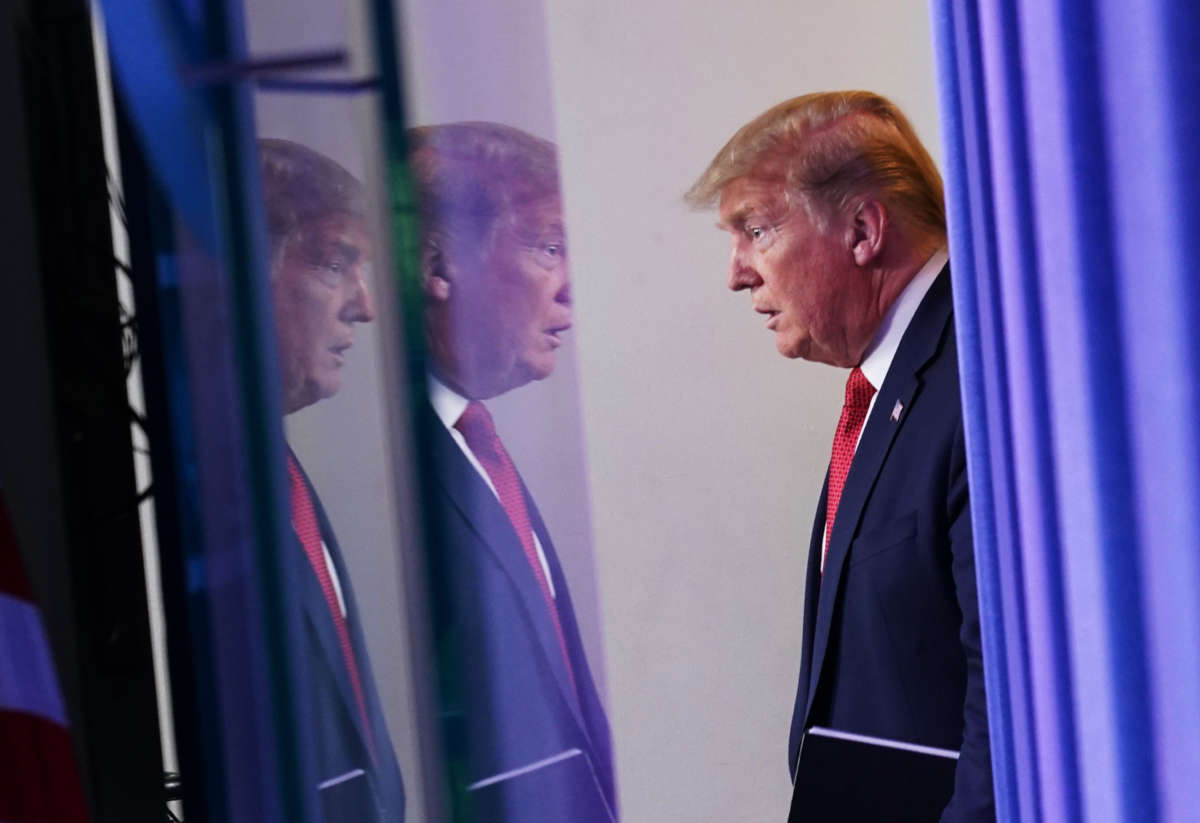Did you know that Truthout is a nonprofit and independently funded by readers like you? If you value what we do, please support our work with a donation.
President Donald Trump has laid out a three-phase approach for how states can end stay-in-place orders over the next several weeks or so, with hopes that doing so can help send people back to work, revitalizing an economy that has been significantly harmed by the spread of the coronavirus.
The president’s plan, unveiled on Thursday, provides a framework for states to follow in order to move from one phase to the next. The first phase is the situation most states find themselves in presently, where strict standards for social distancing should be followed in order to prevent the spread of COVID-19.
The second phase starts when there appears to be no resurgence of cases throughout a given state. It allows for some non-essential travel to resume, including the reopening of schools, restaurants and bars, with some limits.
The final phase begins when there appears to be a downward trend in symptoms within the general populace. It allows for greater public interactions to commence, and for work to resume for most. Visitations to healthcare facilities, including hospitals, are allowed.
Trump’s plan, however, is advisory in nature, putting the onus on states to determine when they should move forward or not. “You’re going to call your own shots,” the president said.
The decision to design things in that manner, according to several current and former senior administration officials who spoke to The Washington Post about the plan, is partially to allow Trump to stave off future criticisms about the disease’s spread. If a resurgence happens in a state that moved ahead too quickly, for example, the president can shift blame toward that governor.
The plan is also missing an important aspect to it: a nationwide strategy for increasing testing for coronavirus. Without such testing, experts largely agree, no plan to end stay-in-place orders to “reopen the economy” can be feasible.
Many on social media have noted that the approach appears to be a way for Trump to blame others going forward if things go wrong.
“Americans are staying home and sacrificing in order to give the federal government time to come up with a post-lockdown plan, but Trump is refusing to do so in order to blame governors for whatever happens next,” Jon Favreau, podcast host and former Obama speechwriter, said.
Americans are staying home and sacrificing in order to give the federal government time to come up with a post-lockdown plan, but Trump is refusing to do so in order to blame governors for whatever happens next. https://t.co/0NGUI9j1n1
— Jon Favreau (@jonfavs) April 10, 2020
The three-phase plan that shifts focus to the states is a political risk for Trump, even if it allows him to assign blame elsewhere if things go wrong. Polling from the Kaiser Family Foundation indicates that the vast majority of Americans, 60 percent, want to see a federal response to the disease, not a state-by-state approach.
So far, Americans have been less-than-thrilled with the way the federal government has handled things. A CNN/SSRS poll published last week revealed that 55 percent of Americans believe the feds have done a poor job of responding to the crisis.
Media that fights fascism
Truthout is funded almost entirely by readers — that’s why we can speak truth to power and cut against the mainstream narrative. But independent journalists at Truthout face mounting political repression under Trump.
We rely on your support to survive McCarthyist censorship. Please make a tax-deductible one-time or monthly donation.
